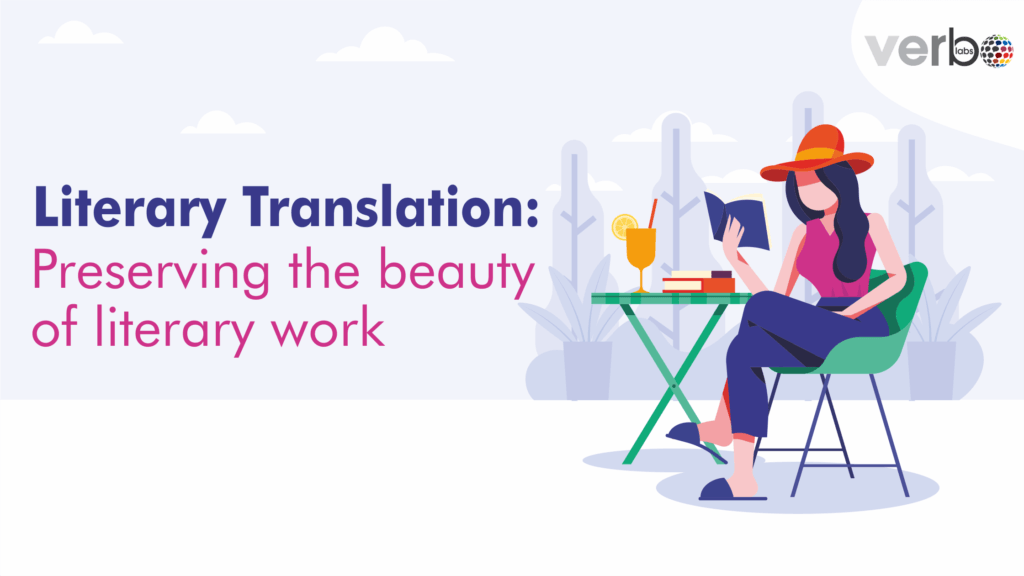Translation services have been an integral part of communication in recent centuries. Its popularity has grown as the world becomes more interconnected and interdependent. These services consider the basic language nuances, cultural context, and hidden meaning while translating. There are around 6,500 languages around the world. So that doesn’t make the translation process more accessible. But an efficient translator is proficient enough to consider these factors while doing their work. Things become tricky when that comes to the translation of literary works. Often hidden metaphors, meanings, and the importance of certain words in those indigenous languages get lost in this process. That’s where the article writing service has to step up. The true beauty and essence of those words get lost in translation. That is true to a great extent. But that shouldn’t stop people from different segments from enjoying that piece of literature. Language shouldn’t be any barrier, while someone who doesn’t speak that language wants to experience the relevance of that literary work. So how can translators keep that in mind while translating academic work? That becomes a big question. Proficient blog writing services can only help you find a way.
Literary translation involves the dedicated efforts of different segments of society to safeguard and protect literary masterpieces. Their main agenda is to ensure that piece of work gets its due longevity and accessibility for future generations. Preserving the beauty and essence of literary works through translation is a delicate and intricate art that requires skill and a deep appreciation for the written work. Literature knows no boundaries. This why people often opt for a good book translation service that does justice to all languages involved. Translation opens the doors to new worlds, allowing readers to explore and engage with diverse narratives. Franz Kafka and Haruki Murakami got them due to this process in recent years. It has also helped in preserving religious Biblical or Abrahamic texts. Beyond the literal translation of words, translators must capture the cultural nuances embedded within the original text. Professional translation services can only help in that sense. they must navigate through the intricacies of metaphors, wordplay, and cultural references to express the true essence of the work to a different language-speaking audience. It is an endeavor that demands not only linguistic proficiency but also a deep respect for the artistry and integrity of the original author. Skilled translation can do the job to a great extent. It can preserve the beauty and essence of literary works and can help transcend language barriers.
Let’s learn how translators can do this more efficiently.
Here is how to preserve the essence of literary works:
- Faithful translation
- Cultural sensitivity
- Adaptation, not alteration
- Collaborative approach
- Attention to style and tone
- Continuous learning and growth
- Reader feedback and revision
Let’s get into the basic details of these points one by one:
- Faithful translation
To preserve the beauty of literary works. It becomes essential to have a faithful translation. It goes beyond mere word-for-word rendering or translating for the sake of doing it. It requires capturing the nuances and imagery of the original text. It often needs the translator to consider the emotions behind the words. Recreating the author’s unique style and voice during the process is essential. Translators must delve into the source language’s depths, uncovering the literary work’s hidden meanings and cultural connotations. That’s what an expert literary translation service does. It should resonate with readers in the target language. The translated work maintains its inherent beauty and artistic value when the translator can preserve the authenticity of the author’s words and intentions.
- Cultural sensitivity
Preserving the beauty of literary works involves more than linguistic accuracy during translation. It requires an in-depth knowledge of the cultural context in which the work was initially created. Translators must navigate the intricacies of the text’s cultural nuances, references, intentions, and historical backgrounds before they begin translating it. They can accurately convey the subtleties and preserve the cultural essence of the text by diving into the culture of the original work. This includes recognizing and respecting cultural traditions and social dynamics. That helps ensure that these elements are faithfully conveyed to the target audience. Decent website translation services can significantly change the game.
- Adaptation, not alteration
The beauty of literary works through translation involves a delicate balance between adaptation and maintaining the integrity of the original text. The more the translator plays with the words, the higher the chances of alteration. Translators must adapt the work to make it accessible to a varied audience without altering the core message and themes of the work. They have to consider the artistic vision of the original work. It requires a keen understanding of the target language and literary conventions to find equivalent expressions and idioms that capture the original work’s essence. That requires practice and precision. The main aim of this process should be to provide readers with an authentic experience while staying true to the author’s intentions. Website translation services must inculcate that.
- Collaborative approach
The beauty of literary works can significantly benefit from collaboration between translators and authors. The more in sync both of them are, the better it is for the eventual product. Engaging in discussions and seeking clarifications directly from the author grants the translator a deeper understanding of the work and its intended meaning. Such collaboration enables translators to gain valuable insights into the author’s creative process. It can also understand the relevance of thematic choices and stylistic preferences. They may only sometimes make sense to the translator, but a conversation can pave the way for a practical understanding of the original work. It can also greatly enhance the accuracy and authenticity of the translation. By working closely with the author, translators can ensure that the translated version remains faithful to the original work’s beauty and vision.
- Attention to style and tone
The author’s unique writing style and tone often make the literary piece of work relevant in the first place. Translators must find ways to capture the rhythm, cadence, and usage of the author’s literary devices throughout the literary piece. The aim of it has to be to recreate the same impact in the target language. They must consider the interplay of words and sentence structure in the piece. The various punctuations and subtle remarks must convey the nuances contributing to the work’s aesthetic appeal. The translated version can maintain the same beauty and literary merit as the original work by recreating the author’s stylistic choices and being true to the voice. In the end, all of this point of this process should be to provide immersive readers to the world. Any good translation agency has to note that.
- Continuous learning and growth
Continuous learning and professional development for translators can help them understand this process easily. Translating literary work requires a certain level of emotional quotient and understanding that only comes with time. Language is ever-evolving, and staying updated with linguistic advancements and cultural shifts is essential to do the job better. Translators must engage in ongoing research and expand their understanding and knowledge of the source and target languages. This continuous learning process ensures that translations remain relevant. It also helps them resonate with contemporary readers. That allows them to appreciate the beauty and significance of the original work fully.
- Reader feedback and revision
A translator’s job continues after the work is translated into the target language. Preserving the beauty of literary works is an iterative process that can significantly benefit from reader feedback. Translators should actively seek feedback from readers, authors, native speakers of the target language, and literary experts to gain insights into the effectiveness of their translation. Such feedback can help them identify areas for improvement and provide valuable perspectives on the fidelity of the translated work. That can significantly help in ensuring that the piece of work remains timeless. Constructive feedback and engaging in revisions can help translators refine and enhance subsequent editions. It can make the website translation services as efficient as possible.
Final words
Maintaining the authenticity of literary works through translation can be a complex task. It requires more than linguistic accuracy. It demands an understanding of cultural contexts, an appreciation for the author’s style and tone, experience of cultural contexts, proficiency in both languages and a commitment to faithful adaptation. Translators play an essential role in bridging the gap between languages and cultures. They ensure the essence of literary works. By maintaining the original text’s authenticity and integrity, translators enrich global academic accessibility. Preserving literary beauty is an ongoing journey where continuous learning, collaboration, and reader feedback are invaluable. Verbolabs maintain the same voice as it not just translates the language but localizes it to a great extent. It’s at the peak of professional translation services. This resonates with audiences around the world is what localization and translation demand.



